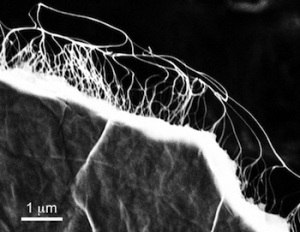Researchers from Rice University and Queensland University of Technology (QUT) have developed a lightweight supercapacitor that can be combined with regular batteries to boost the power of an electric car.

This supercapacitor is made of graphene films as the electrodes and carbon nanotube films as current collectors, resulting in a device that demonstrates energy densities of 8-14 watt-hours per kilogram, and power densities of 250-450 kilowatts per kilogram.
The researchers aim for the device's film shape to enable its use as part of composite car doors, roofs and other body parts of an electric car, to boost its power. Hundreds of such silm supercapacitors are meant to be integrated in a car's panels, so the electric energy required to power the car's battery can be stored in the body of the car itself.
The supercapacitor can be charged through regenerative braking and is intended to work alongside the lithium-ion batteries in electric vehicles. It can provide extra energy for acceleration, as supercapacitors hold a limited charge but are able to deliver it very fast - which complements batteries very well. In addition, the charging time should drop to just a few minutes, compared with several hours for a standard electric car.